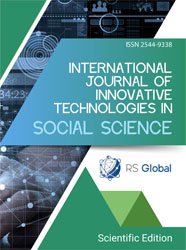ANALGESIC PHARMACOTHERAPY IN DYSMENORRHEA AND THE RISK OF DEVELOPING CHRONIC MIGRAINE
Abstract
Introduction and Purpose: Dysmenorrhea, particularly primary dysmenorrhea, is a common gynecological condition characterized by cyclical and often severe pain, typically managed with analgesics such as NSAIDs, acetaminophen, and opioids. Habitual, suboptimal, or excessive use of these medications may facilitate the transformation of episodic headaches into chronic forms through central sensitization and receptor-level changes in the central nervous system. Despite widespread pharmacotherapy, comprehensive synthesis regarding its role in chronic migraine development is lacking. This review systematically summarizes data from cohort, case-control, and interventional studies to evaluate the relationship between dysmenorrhea pharmacotherapy and chronic migraine risk. The study examines whether medication type, frequency of use, and patient-related factors—including age at dysmenorrhea onset, pain severity, comorbid psychiatric disorders, and use of migraine prophylactic agents—modulate this risk.
Results: Medication overuse headache (MOH) arises from excessive use of acute headache medications in patients with primary headache disorders, most commonly migraine. Opioids, butalbital-containing analgesics, acetaminophen–aspirin–caffeine combinations, and triptans confer the highest risk of chronification, while NSAIDs carry moderate risk and hormonal therapies may reduce pain frequency and intensity, potentially decreasing the need for frequent analgesic use. Frequent acute medication use (NSAIDs or acetaminophen ≥15 days/month, opioids/triptans ≥10 days/month), early dysmenorrhea onset, severe pain, and comorbid psychiatric conditions significantly increase MOH and chronic migraine risk. Implementation of prophylactic therapies and patient education can reduce reliance on acute medications and mitigate headache chronification.
Conclusion: Analgesic use in dysmenorrhea carries a risk of chronic migraine development, particularly with high-frequency or high-risk medications. Hormonal therapies, prophylactic strategies, individualized treatment, and monitoring of acute medication use are critical to minimize MOH and optimize long-term outcomes.
References
Ashina, S., Terwindt, G. M., Steiner, T. J., Lee, M. J., Porreca, F., Tassorelli, C., Schwedt, T. J., Jensen, R. H., Diener, H.-C., & Lipton, R. B. (2023). Medication overuse headache. Nature Reviews. Disease Primers, 9(1), 5. https://doi.org/10.1038/s41572-022-00415-0
Carlsen, L. N., Munksgaard, S. B., Nielsen, M., Engelstoft, I. M. S., Westergaard, M. L., Bendtsen, L., & Jensen, R. H. (2020). Comparison of 3 Treatment Strategies for Medication Overuse Headache: A Randomized Clinical Trial. JAMA Neurology, 77(9), 1069–1078. https://doi.org/10.1001/jamaneurol.2020.1179
Curone, M., D’Amico, D., & Bussone, G. (2012). Obsessive-compulsive aspects as predictors of poor response to treatments in patients with chronic migraine and medication overuse. Neurological Sciences: Official Journal of the Italian Neurological Society and of the Italian Society of Clinical Neurophysiology, 33 Suppl 1, S211-213. https://doi.org/10.1007/s10072-012-1070-5
Dawood, M. Y., & Khan-Dawood, F. S. (2007). Clinical efficacy and differential inhibition of menstrual fluid prostaglandin F2alpha in a randomized, double-blind, crossover treatment with placebo, acetaminophen, and ibuprofen in primary dysmenorrhea. American Journal of Obstetrics and Gynecology, 196(1), 35.e1-5. https://doi.org/10.1016/j.ajog.2006.06.091
De Sanctis, V., Soliman, A., Bernasconi, S., Bianchin, L., Bona, G., Bozzola, M., Buzi, F., De Sanctis, C., Tonini, G., Rigon, F., & Perissinotto, E. (2015). Primary Dysmenorrhea in Adolescents: Prevalence, Impact and Recent Knowledge. Pediatric Endocrinology Reviews: PER, 13(2), 512–520.
Fischer, M. A., & Jan, A. (2025). Medication-Overuse Headache. W StatPearls. StatPearls Publishing. http://www.ncbi.nlm.nih.gov/books/NBK538150/
Furniss, L. D. (1982). Nonsteroidal anti-inflammatory agents in the treatment of primary dysmenorrhea. Clinical Pharmacy, 1(4), 327–333.
Hagen, K., Linde, M., Steiner, T. J., Stovner, L. J., & Zwart, J.-A. (2012). Risk factors for medication-overuse headache: An 11-year follow-up study. The Nord-Trøndelag Health Studies. Pain, 153(1), 56–61. https://doi.org/10.1016/j.pain.2011.08.018
Kirsch, E., Rahman, S., Kerolus, K., Hasan, R., Kowalska, D. B., Desai, A., & Bergese, S. D. (2024). Dysmenorrhea, a Narrative Review of Therapeutic Options. Journal of Pain Research, 17, 2657–2666. https://doi.org/10.2147/JPR.S459584
Merki-Feld, G., Dietrich, H., Imesch, P., Gantenbein, A. R., Sandor, P., & Schankin, C. J. (2024). Investigating migraine phenotype and dynamics in women with endometriosis: An observational pilot study. Acta Neurologica Belgica, 124(4), 1263–1271. https://doi.org/10.1007/s13760-024-02484-2
Merki-Feld, G. S., Sandor, P. S., Nappi, R. E., Pohl, H., & Schankin, C. (2022). Clinical features of migraine with onset prior to or during start of combined hormonal contraception: A prospective cohort study. Acta Neurologica Belgica, 122(2), 401–409. https://doi.org/10.1007/s13760-021-01677-3
Nie, W., Xu, P., Hao, C., Chen, Y., Yin, Y., & Wang, L. (2020). Efficacy and safety of over-the-counter analgesics for primary dysmenorrhea: A network meta-analysis. Medicine, 99(19), e19881. https://doi.org/10.1097/MD.0000000000019881
Osayande, A. S., & Mehulic, S. (2014). Diagnosis and Initial Management of Dysmenorrhea. American Family Physician, 89(5), 341–346.
Perrotta, A., Serrao, M., Sandrini, G., Burstein, R., Sances, G., Rossi, P., Bartolo, M., Pierelli, F., & Nappi, G. (2010). Sensitisation of spinal cord pain processing in medication overuse headache involves supraspinal pain control. Cephalalgia: An International Journal of Headache, 30(3), 272–284. https://doi.org/10.1111/j.1468-2982.2009.01914.x
Schroll, J. B., Black, A. Y., Farquhar, C., & Chen, I. (2023). Combined oral contraceptive pill for primary dysmenorrhoea. The Cochrane Database of Systematic Reviews, 2023(7), CD002120. https://doi.org/10.1002/14651858.CD002120.pub4
Sebastianelli, G., Casillo, F., Abagnale, C., Renzo, A. D., Cioffi, E., Parisi, V., Lorenzo, C. D., Fazio, F., Petricola, F., Mattia, C., Serrao, M., Schoenen, J., & Coppola, G. (2023). Central sensitization mechanisms in chronic migraine with medication overuse headache: A study of thalamocortical activation and lateral cortical inhibition. Cephalalgia, 43(10), 03331024231202240. https://doi.org/10.1177/03331024231202240
Wang, Y.-F., Yu, C.-C., Kuan, A. S., Chen, S.-P., & Wang, S.-J. (2021). Association between suicidal risks and medication-overuse headache in chronic migraine: A cross-sectional study. The Journal of Headache and Pain, 22(1), 36. https://doi.org/10.1186/s10194-021-01248-0
Zhang, W. Y., & Li Wan Po, A. (1998). Efficacy of minor analgesics in primary dysmenorrhoea: A systematic review. British Journal of Obstetrics and Gynaecology, 105(7), 780–789. https://doi.org/10.1111/j.1471-0528.1998.tb10210.x
Views:
179
Downloads:
100
Copyright (c) 2025 Karolina Wojdat-Krupa, Weronika Ossowska, Filip Lachowski, Karol Sikora, Julia Dolinkiewicz, Martyna Wasyluk

This work is licensed under a Creative Commons Attribution 4.0 International License.
All articles are published in open-access and licensed under a Creative Commons Attribution 4.0 International License (CC BY 4.0). Hence, authors retain copyright to the content of the articles.
CC BY 4.0 License allows content to be copied, adapted, displayed, distributed, re-published or otherwise re-used for any purpose including for adaptation and commercial use provided the content is attributed.











